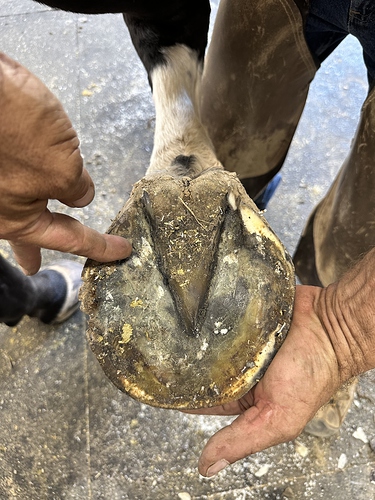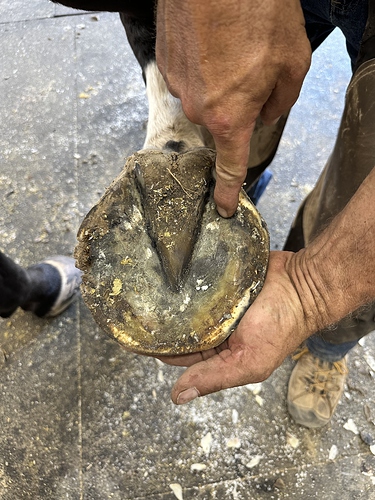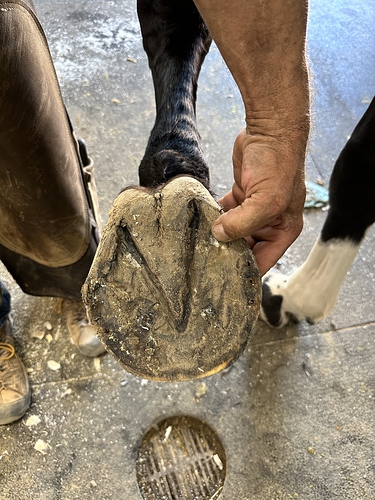Update -
On Sunday the farrier was out, and he was 3/5 Lame tracking both directions under saddle, lameness the same on straight lines/turns/circles. We removed the shoes, and hoof tested and he hoof tested reactive in both heels on both fronts. We removed the impression material, widen the wedge pad for more space and substituted it with magic cushion. Jogged him on the line and immediate improvement in both directions, sound tracking left and 1/5 tracking right.
Yesterday Afternoon - barn is closed on mondays, we come out yesterday for his vet appt and he jogs much much better again undersaddle. Took a few weird, “tranter” style steps right when we picked up the trot and then it was gone and he looked and felt like himself. Vet said he could see a few steps here and there, but it swaps from RF to LF and only shows itself randomly when the foot is on the outside. Vet is inclined to think its foot pain, related to the shoes since we saw such drastic improvement from making a shoe change 48 hours ago.
Next we go to X-rays, alot of x-rays. Vet is not pleased with current state of the feet. Apparently we have not balance x-rays since January, and things are different. His LF has a -1/-2 palmar angle, frog is wanting to prolapse (but hasnt yet), and heels are more contracted/crushed than before. His RF is a -1 palmar angle, frog is wanting to prolapse (but hasn’t yet), and heels are more contracted/crushed than before (this horse just had his feet redone 13 days ago). Next we pull the shoes, and snap more pics and coffin bone/navicular/etc all look fine.
Then we move onto Ultrasound. Using 4 different probes, we scan each front leg from the knee down. Suspensory, DDFT (we prepped the frog and were able to ultrasound through the frog to see insertion, coffin bone, navicular, etc. as well), proximal sesamoidan, lateral collaterals all look good. Medial Collaterals both look the same but don’t look the same as the lateral collaterals. We then pull-up his previous ultrasound scans of the Medial Collaterals from 2020, 2021, and 2022 and they look the same as the last scans. Fiber Patterns have remain unchanged, they just seem to be abnormally different but vet seems to think that with his history, this is who he is (he’s been sound and in work during all of those scans).
Vet believes based on his clinical presentation, shoeing and vet history…that the main problem is the shoes - he calls the farrier and they’re coming up with a new plan for his shoeing. They want a straight bar or a heart bar, possibly with a rocker toe or lateral roll and to go with a pour-in pad instead of impression material (but first we have to get the heel soreness out). Vet says don’t send for the MRI as he believes the medial collaterals are not clinical, he wants to fix the shoes first and go from there. I elect to shockwave the medial collaterals while we wait for the shoeing to be addressed. Farrier comes back out today to put shoes back on, and big guy is on hand walk/tack walk for 10-14 days while we figure out the shoes. Vet will come back and guide farrier with x-rays and emotional support through the next shoeing to get the angles and balance back under control.



